#karachi university
Text

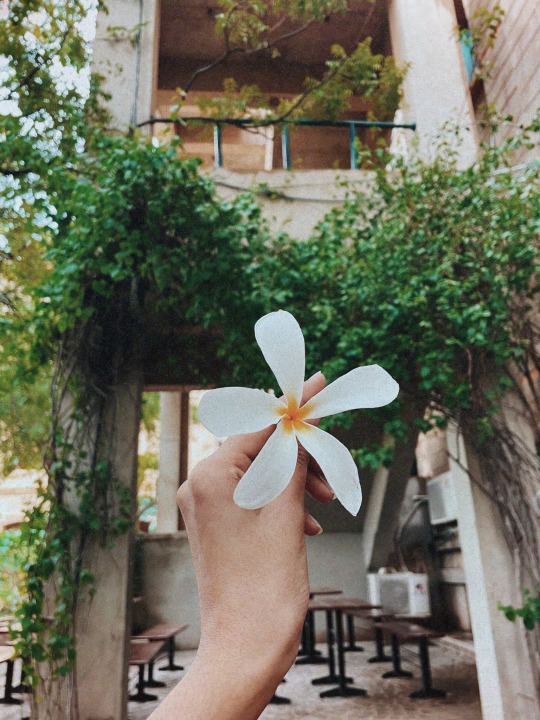
uni campus, post rain.
#karachi#photography#lookslikefilm#green#35mm#floral#Pakistan#shot on iphone#university#rain#monsoon
5 notes
·
View notes
Text
The MarkWHO42's Universe Podcast - Episode 337 - Night Light to the Rescue
The MarkWHO42’s Universe Podcast – Episode 337 – Night Light to the Rescue
The most recent version of Ms. Marvel is now a live-action miniseries playing on Disney+. We meet Kamala Khan and her best friends Bruno and Nakia – normal teenagers from Jersey City. When the past interjects into the present, everything changes. Is Kamala a mutant? Are the Clandestines the big baddie or is it Damage Control Agent Deever we should fear? What is next for Kamala and The Marvels?…

View On WordPress
#Aamir Khan#Agent Cleary#Agent Deever#Aisha#Bisha K. Ali#Brie Larson#Bruno Carelli#Captain Marvel#Carol Danvers#Clandestines#Department of Damage Control#Eduardo M Freyre#Iman Vellani#Jersey City#Kamala Khan#Kamran#Karachi#Mark Baumgarten#MarkWHO42#MarkWHO42&039;s Universe#Marvel Cinematic Universe#MCU#Ms. Marvel#Muneeba Khan#Najma#Nakia#New Jersey#Pakistan#partition#Podcast
3 notes
·
View notes
Text
SZABIST University International Conference on Dealing with Disruption and Sustainability through Innovation
(April 20, 2024) – Day 2 of the SZABIST University International Conference started with a panel discussion on Sustainable Development Goals. Panelists included Vice Chancellor, Salim Habib University, Prof. Dr. Irfan Hyder, Dean ASC, NED University, Dr. Noman, renowned development economist Dr. Qaiser Bengali and one of the most vocal activist and advocate of women rights in Pakistan, Ms.…
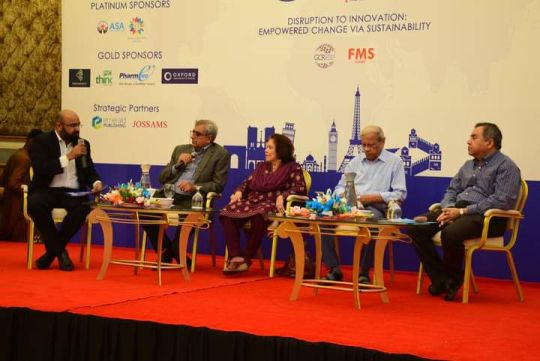
View On WordPress
#Disruption#Dr. Ishrat Husain#Innovation#Marriott Hotel Karachi#Muhammad Idrees#Mujeeb ud din Sehrai#Saeed Uddin#Shahnaz Wazir Ali#Sustainability#Szabist#Szabist Conference#SZABIST University#SZABIST University International Conference#Yasmeen Qazi
0 notes
Text
True Stories of Immigrant Americans: Giving it All
TRUE STORIES OF IMMIGRANTS TO AMERICA……….
GIVING IT ALL ……. WITH NO RETURNS
Names, Places and some events have been changed to protect the identity of the protagonists in this tale.
I hit send and the email floats into cyberspace….. It contains sentences begging for his dignity and financial assistance for his health care from his own hard earned money ensconced in the treasure troves of the…

View On WordPress
#accidents#Allah#American apple pie#American immigrants#Elderly men#falls#Female doctors#Gaza#Israelis#Karachi#Maulana Maudoodi#Medical Insurances.#medical school#muslim#Pakistan#Palestinians#The Struggle of Muslim Women#University Professors#Women in Islam
0 notes
Text


There's their Spirit Pets are Karachi and Odre.
The two character's pets are different of Kyubey (Madoka Magica and Magica Record) and Fav. (Mahou Shoujo Ikusei Keikaku)
0 notes
Text
اعلیٰ تعلیمی ادارے تباہی کے دہانے پر

پاکستان میں متوسط طبقہ کے لیے مہنگائی کے بعد اب تعلیم کا حصول بھی بڑا مسئلہ بن چکا ہے۔ پاکستانی طلبہ کی اکثریت جنھیں سرکاری تعلیمی اداروں میں اعلیٰ تعلیم حاصل کرنے کے مواقع میسر تھے، اب پہلے جیسے نہیں رہے اور حالات مزید تنزلی کی طرف جا رہے ہیں۔ اعلیٰ تعلیم سے متعلق ایک عرصے سے کوئی واضح اور مستقل تعلیمی پالیسی نظر نہیں آ رہی۔ ایسا محسوس ہوتا ہے کہ ملکی سیاسی منظر نامے کے تبدیل ہوتے ہی اعلیٰ تعلیمی اداروں کے اہم عہدیدار بھی تبدیل ہوتے ہیں اور اس تبدیلی کے ساتھ ہی تعلیمی پالیسیاں بھی تبدیل ہونے لگتی ہیں۔ حال ہی کی ایک خبر کے مطابق ایک سابق وزیراعظم کی قریبی عزیزہ اعلیٰ تعلیمی ادارے کے اہم ترین عہدے سے فارغ۔ ظاہر ہے جس ملک میں تعلیمی پالیسیاں بھی کسی کرکٹ میچ کی صورتحال کی طرح تبدیل ہوں وہاں تعلیمی معیار کیونکر عالمی سطح کا ہو سکتا ہے؟ غیر ملکی تعلیمی اداروں سے فارغ التحصیل جب ملکی تعلیمی پالیسیوں میں اپنا حصہ ڈالتے ہیں تو انھیں اس ملک اور اس کے طلبہ کی ضروریات اور حالات کا قطعی علم اور احساس نہیں ہوتا اور نہ ہی وہ تعلیمی پالیسیوں کو مرتب کرتے وقت متعلقہ ’’اسٹیک ہولڈرز‘‘سے مشورہ لیتے ہیں، چنانچہ ہم دیکھتے ہیں کہ تقریباً دو دہائیوں سے یہی طے نہ ہو سکا کہ جامعات میں آنرز اور ماسٹر کی ڈگریاں ہی اس ملک کے طلبہ کے مستقبل کا ضامن ہیں یا ’ بی ایس‘ کی؟
یہی کچھ حال کالجز اور پرائیویٹ اداروں کی ڈگریوں کے معاملات کا ہے، بات صرف یہی تک محدود نہیں ہے بلکہ حساس ترین اور اہم بات یہ ہے کہ اب سرکاری اعلیٰ تعلیمی اداروں کو کسی صنعتی ادارے یا فیکٹری کی طرح چلانے کا راستہ اختیار کر لیا گیا ہے اور تعلیمی اداروں کو پروڈکشن تیار کرنے یعنی مال کمانے والے ادارے کے طور پر چلانے کی بھر پور کوشش کی جا رہی ہے اور جامعات کی خودمختاری کو ختم کرتے ہوئے یہ باور کروایا جا رہا ہے کہ جامعات کا کام صرف پیسہ کمانا ہے فنڈز طلب کرنا نہیں۔ با الفاظ دیگر حکمرانوں کی جانب سے تعلیمی فنڈز فراہم کرنے کے بجائے ہاتھ کھڑے کر لیے گئے ہیں کہ جامعات کے اخراجات کے لیے حکومت کی طرف مت دیکھو، خود بندوبست کرو۔ سوال یہ ہے کہ جامعات تعلیم فراہم کرنے کا ادارہ ہوتی ہیں یا کسی فیکٹری کی طرح مال تیار کر کے، اسے فروخت کر کے پیسہ کماتی ہیں؟ حالیہ ایک خبر کے مطابق سندھ کے سیکریٹری یونیورسٹیز اینڈ بورڈز کے اجلاس میں جامعات سے کہا گیا کہ وہ اپنے اخراجات کو کم کریں اور ریسورس جنریشن کے دیگر ذرایع تلاش کیے جائیں۔ یہ بھی کہا گیا کہ جامعات میں ملازمین کی ضرورت سے زائد تعداد جامعات کے وسائل پر بوجھ ہے۔

حقیقت تو یہ ہے کہ تمام سرکاری اداروں میں تقرریاں سیاسی دباؤ کے تحت ہوتی ہیں جو ظاہر ہے کہ حکمرانوں کی جانب سے ہی ہوتا ہے تو اس کو ختم کرنا بھی حکومت کی ہی ذمے داری بنتی ہے۔ اسی طرح یہ کہنا کہ آیندہ تقرریاں بغیر پنشن کی بنیاد پر دی جائیں۔ سوال یہ ہے کہ جب آپ ایک استاد کو گھر چلانے کے لیے مناسب مشاہرہ اور مراعات جو دیگر سرکاری اداروں کے ملازمین کو بھی دی جاتی ہیں، اس سے محروم کر دیں گے تو اس سے ایک اچھی کارکردگی کی توقع کیسے رکھیں گے؟ کیا ایک استاد مہنگائی کے اس دور میں اپنے گھر کے اخراجات پورے کرنے کے لیے دیگر جگہوں پر کام نہیں کرے گا؟ ایسے میں وہ طلبہ کوزیادہ وقت نہیں دے سکے گا اور نہ توجہ۔ اس ملک میں ایک طبقے کو تو ریٹائرمنٹ کے بعد بھی مر��عات دی جائیں اور ایک استاد جو پوری قوم کو اپنے پاؤں پر کھڑا کرتا ہے اس سے پنشن کا حق بھی چھین لیا جائے؟ بات یہ ہے کہ موجودہ صورتحال میں بھی جامعات کے اساتذہ کو وہ حقوق نہیں مل رہے جو قانونی طور پر ان کا حق ہے، مثلاًبیشتر جامعات میں پنشن بند ہے، کچھ میں تنخواہیں پوری نہیں مل رہی ہیں اور اساتذہ پروموشن کے بغیر ریٹائر ہو رہے ہیں۔
ملک کی سب سے بڑی جامعہ کراچی ہی میں تین اساتذہ بغیر پروموشن کے ریٹائر ہو گئے، پروموشن ان کا حق تھا وہ اس معیار پر بھی پورے اتر تے تھے اور عدالت کی طرف سے اس ضمن میں ہدایات بھی تھیں، تب بھی ان اساتذہ کو پروموشن جو ان کا حق تھا نہیں مل سکا اور اب پنشن بھی نہیں مل رہی۔ اب پنشن کے بغیر تقرری کی بات کی جا رہی ہے جب کہ جامعات کے اساتذہ کو تو اس وقت بھی پروموشن کا حق حاصل نہیں کیونکہ عرف عام میں ہم جب پروموشن کا لفظ استعمال کرتے ہیں توعملاً اس کا مطلب یہ ہوتا ہے کہ اگر جامعہ نئی تقرری کا اشتہار دیتی ہے تو یہاں پہلے سے مستقل بنیادوں پر کام کرنے والا ایک استاد دوبارہ سے ایک نئے امیدوار کی حیثیت سے درخواست جمع کرائے اور اس تمام مراحل سے گزرے جس سے ایک باہر سے آکر درخواست دینے والا امیدوار گزرے۔ گویا جامعات کا کوئی استاد اگر زندگی میں بھی نئی آسامی (پوسٹ یا عہدے) کے لیے درخواست جمع نہیں کرائے گا تو ایسے ہی ریٹائر ہو جائے گا، اس کا کوئی پروموشن نہیں ہو گا خواہ اس کی بیس، پچیس سال کی سروس ہو۔ دوسری طرف ایک عام سرکاری ملازم کو پانچ سال بعد سنیارٹی کے پرموشن بھی ملتا ہے اور آفیسر گریڈ کے ملازم کو گاڑی، ڈرائیور بھی جب کہ جامعہ کے گریڈ انیس اور بیس کے پروفیسر کو نہیں ملتا۔
یہ صورتحال اعلیٰ سرکاری تعلیمی اداروں کو بہت تیزی کے ساتھ تباہی کی طرف لے جا رہی ہے جس کا سب سے زیادہ نقصان اس ملک کے مڈل کلاس طبقے کو ہو رہا ہے۔ جامعات ان حالات میں اپنے اخراجات پورے کرنے کے لیے مسلسل فیسوں میں اضافہ کر رہی ہیں جو ظاہر ہے کہ مڈل کلاس طبقے کے لیے مشکلات کا باعث ہے۔ پہلے ہی اس ملک میں سرکاری اسکولوں کی تباہی ہو چکی ہے جس کی وجہ سے وہ خاندان جو پرائیویٹ اسکولوں کی فیس ادا نہیں کر سکتے، ان کی ایک بڑی تعداد مدرسوں کا رخ کر رہی ہے جہاں وہ مڈل یا میٹرک تک تعلیم حاصل کرنے کے بعد ��وبارہ سرکاری تعلیمی اداروں کا رخ کرتے ہیں تاکہ انھیں کوئی اچھا ذریعہ معاش مل سکے۔ اب بہت سے دینی مدارس نے بی بی اے، ایم بی اے اور میڈیا سائنسز میں بھی ڈگری کورسسز شروع کر دیے ہیں اور مڈل کلاس کی ایک تعداد اس طرف بھی جا رہی ہے، لیکن ایسے اداروں کی تعداد زیادہ نہیں ہے چنانچہ اگر ریاست کی طرف سے تعلیمی معاملات اور پالیسیوں کو سنجیدگی سے نہیں لیا گیا تو اس بات کا قوی امکان ہے کہ مڈل کلاس پر آیندہ اعلیٰ تعلیم کے دروازے تقریباً بند ہو جائیں گے جو ملکی ترقی اور مستقبل کے لیے بھی ایک خطرناک مرحلہ ہو گا۔
ڈاکٹر نوید اقبال انصاری
بشکریہ ایکسپریس نیوز
0 notes
Text

I think about this image a lot. This is an image from the Aurat March (Women's March) in Karachi, Pakistan, on International Women's Day 2018. The women in the picture are Pakistani trans women, aka khwaja siras or hijras; one is a friend of a close friend of mine.
In the eyes of the Pakistani government and anthropologists, they're a "third gender." They're denied access to many resources that are available to cis women. Trans women in Pakistan didn't decide to be third-gendered; cis people force it on them whether they like it or not.
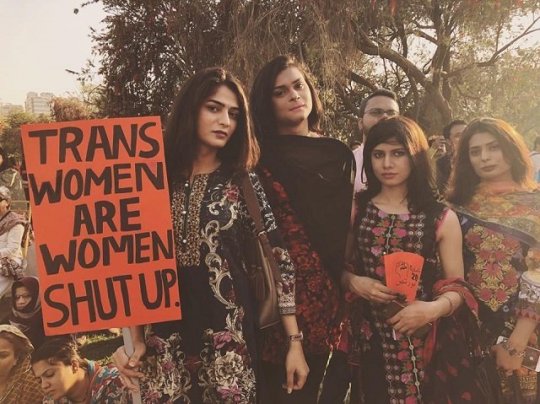
Western anthropologists are keen on seeing non-Western trans women as culturally constructed third genders, "neither male nor female," and often contrast them (a "legitimate" third gender accepted in its culture) with Western trans women (horrific parodies of female stereotypes).
There's a lot of smoke and mirrors and jargon used to obscure the fact that while each culture's trans women are treated as a single culturally constructed identity separate from all other trans women, cis women are treated as a universal category that can just be called "women."
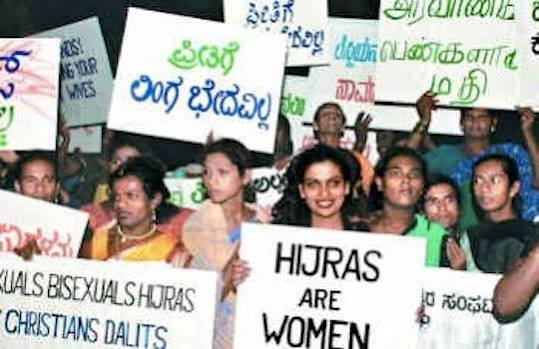
Even though Pakistani aurat and German Frauen and Guatemalan mujer will generally lead extraordinarily different lives due to the differences in culture, they are universally recognized as women.
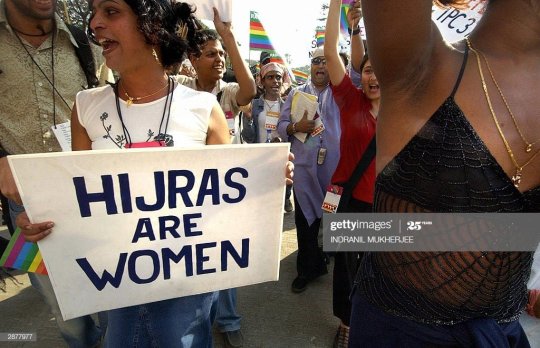
The transmisogynist will say, "Yes, but we can't ignore the way gender is culturally constructed, and hijras aren't trans women, they're a third gender. Now let's worry less about trans people and more about the rights of women in Burkina Faso."

In other words, to the transmisogynist, all cis women are women, and all trans women are something else.
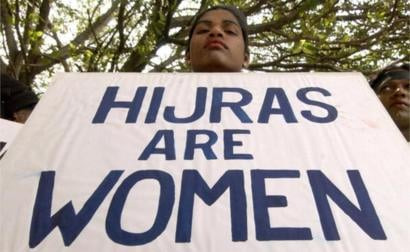
"But Kat, you're not Indian or Pakistani. You're not a hijra or khwaja sira, why is this so important to you?"
Have you ever heard of the Neapolitan third gender "femminiello"? It's the term my moniker "The Femme in Yellow" is derived from, and yes, I'm Neapolitan. Shut up.
I'm going to tell you a little bit about the femminielli, and I want you to see if any of this sounds familiar. Femminielli are a third gender in Neapolitan culture of people assigned male at birth who have a feminine gender expression.
They are lauded and respected in the local culture, considered to be good omens and bringers of good luck. At festivals you'd bring a femminiello with you to go gambling, and often they would be brought in to give blessings to newborns. Noticing anything familiar yet?
Oh and also they were largely relegated to begging and sex work and were not allowed to be educated and many were homeless and lived in the back alleys of Naples, but you know we don't really like to mention that part because it sounds a lot less romantic and mystical.
And if you're sitting there, asking yourself why a an accurate description of femminiello sounds almost note for note like the same way hijras get described and talked about, then you can start to understand why that picture at the start of this post has so much meaning for me.
And you can also start to understand why I get so frustrated when I see other queer people buy into this fool notion that for some reason the transes from different cultures must never mix.
That friend I mentioned earlier is a white American trans woman. She spent years living in India, and as I recal the story the family she was staying with saw her as a white, foreign hijra and she was asked to use her magic hijra powers to bless the house she was staying in.
So when it comes to various cultural trans identities there are two ways we can look at this. We can look at things from a standpoint of expressed identity, in which case we have to preferentially choose to translate one word for the local word, or to leave it untranslated.
If we translate it, people will say we're artificially imposing an outside category (so long as it's not cis people, that's fine). If we don't, what we're implying, is that this concept doesn't exist in the target language, which suggests that it's fundamentally a different thing
A concrete example is that Serena Nanda in her 1990 and 2000 books, bent over backwards to say that Hijras are categorically NOT trans women. Lots of them are!
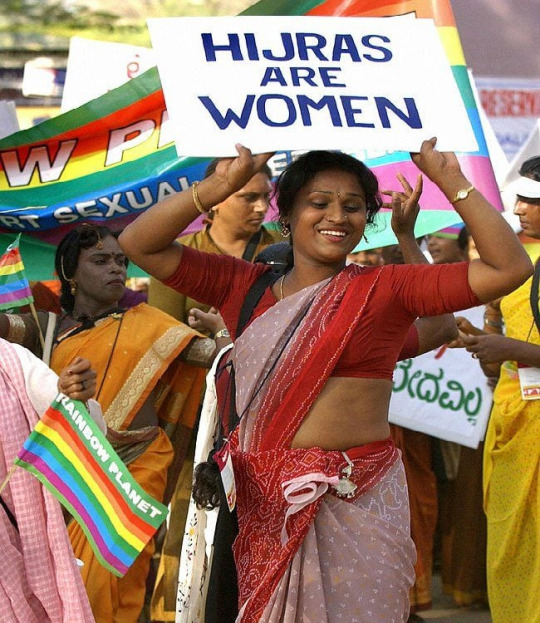
And Don Kulick bent over backwards in his 1998 book to say that travesti are categorically NOT trans women, even though some of the ones he cited were then and are now trans women.
The other option, is to look at practice, and talk about a community of practice of people who are AMAB, who wear women's clothing, take women's names, fulfill women's social roles, use women's language and mannerisms, etc WITHIN THEIR OWN CULTURAL CONTEXT.
This community of practice, whatever we want to call it - trans woman, hijra, transfeminine, femminiello, fairy, queen, to name just a few - can then be seen to CLEARLY be trans-national and trans-cultural in a way that is not clearly evident in the other way of looking at things.
And this is important, in my mind, because it is this axis of similarity that is serving as the basis for a growing transnational transgender rights movement, particularly in South Asia. It's why you see pictures like this one taken at the 2018 Aurat March in Karachi, Pakistan.
And it also groups rather than splits, pointing out not only points of continuity in the practices of western trans women and fa'afafines, but also between trans women in South Asia outside the hijra community, and members of the hijra community both trans women and not.
To be blunt, I'm not all that interested in the word trans woman, or the word hijra. I'm not interested in the word femminiello or the word fa'afafine.
I'm interested in the fact that when I visit India, and I meet hijras (or trans women, self-expressed) and I say I'm a trans woman, we suddenly sit together, talk about life, they ask to see American hormones and compare them to Indian hormones.
There is a shared community of practice that creates a bond between us that cis people don't have. That's not to say that we all have the exact same internal sense of self, but for the most part, we belong to the same community of practice based on life histories and behavior.
I think that's something cis people have absolutely missed - largely in an effort to artificially isolate trans women. This practice of arguing about whether a particular "third gender" label = trans women or not, also tends to artificially homogenize trans women as a group.
You see this in Kulick and Nanda, where if you read them, you could be forgiven for thinking all American trans women are white, middle class, middle-aged, and college-educated, who all follow rigid codes of behavior and surgical schedules prescribed by male physicians.
There are trans women who think of themselves as separate from cis women, as literally another kind of thing, there are trans women who think of themselves as coterminous with cis women, there are trans women who think of themselves as anything under the sun you want to imagine.
The problem is that historically, cis people have gone to tremendous lengths to destroy points of continuity in the transgender community (see everything I've cited and more), and particularly this has been an exercise in transmisogyny of grotesque levels.
The question is do you want to talk about culturally different ways of being trans, or do you want to try to create as many neatly-boxed third genders as you can to prop up transphobic theoretical frameworks? To date, people have done the latter. I'm interested in the former.
I guess what I'm really trying to say with all of this is that we're all family y'all.
#transgender#third gender#hijras#femminielli#trans women are women#trans solidarity#trans rights#transmisogyny#transunity#transunitism#this is what trans unity looks like
7K notes
·
View notes
Text
کراچی میں ایک آئی ٹی یونیورسٹی قائم کی جائے گی - الخدمت کراچی کے صدر حافظ نعیم الرحمان کا عزم۔
کراچی میں ایک آئی ٹی یونیورسٹی قائم کی جائے گی – الخدمت کراچی کے صدر حافظ نعیم الرحمان کا عزم۔
الخدمت فاؤنڈیشن کراچی کے صدر حافظ نعیم الرحمن نے اس عزم کا اظہار کیا کہ اگر وہ ضلعی حکومت کے میئر منتخب ہوئے تو نوجوانوں میں ہنر مندی پر مبنی تعلیم کو فروغ دینے کے لیے کراچی میں ایک آئی ٹی یونیورسٹی قائم کی جائے گی۔
جماعت اسلامی کراچی چیپٹر کے فلاحی ونگ الخدمت فاؤنڈیشن کی جانب سے شروع کیے گئے ‘بنو قابل پروگرام’ کے لیے اہلیت کے امتحان میں شرکت کرنے والے امیدواروں کی ایک بڑی تعداد سے خطاب کرتے…
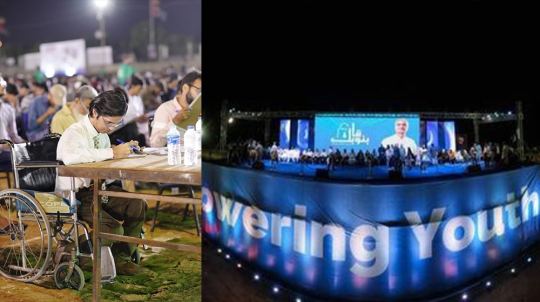
View On WordPress
0 notes
Photo

Please correct your direction . . . . . . #motivation #emotions #emotional #think #thinking #progress #direction #right #positive #success #positivethinking #better #pakistan #lahore #islamabad #peshawar #karachi #punjab #uni #university #univesität #germany #deutschland #dutch #berlin #müchen #sprachen #frau #ledig #herr (at Engr. Muhammad Faisal Imran) https://www.instagram.com/p/ChuIltxtHDI/?igshid=NGJjMDIxMWI=
#motivation#emotions#emotional#think#thinking#progress#direction#right#positive#success#positivethinking#better#pakistan#lahore#islamabad#peshawar#karachi#punjab#uni#university#univesität#germany#deutschland#dutch#berlin#müchen#sprachen#frau#ledig#herr
0 notes
Text
Top best universities in Pakistan ranking – which one will you choose?
Top best universities in Pakistan ranking – which one will you choose?
The amount of universities in Pakistan has reached an all-time high in terms of the quality of education and facilities provided. However, still there are too many options to choose from which has led students to not be able to decide which University they should go to. We are sure that you are on this page as you too might be in need of knowing the best Universities in Pakistan and we will try…

View On WordPress
0 notes
Text
CT University ensures bright future of students.. According to increasing competition.. | KKG INFO
CT University ensures bright future of students.. According to increasing competition.. | KKG INFO
CT University: CT University in Punjab imparts skills needed by industries. Located in Ludhiana, this university has initiated many revolutionary changes in the field of education.
Academic News: CT University in Punjab brings out the talent of students. Located in Ludhiana, this university has initiated many revolutionary changes in the field of education. To provide students with employable…

View On WordPress
#Bright#competition.#dae latest jobs#Educational news#ensures#future#increasing#INFO#KKG#latest jobs 2022#latest jobs govt 2022#latest jobs kampala#latest jobs mbbs doctor karachi#Punjab#ssc latest jobs#Students.#University#wapda latest jobs 2021
0 notes
Text
faculty jobs in Karachi - jobs in dewan university Karachi
faculty jobs in Karachi – jobs in dewan university Karachi

View On WordPress
0 notes
Text
Pierce Brown Light Bringer Q&A
I went to pierces book signing tonight and I will attempt to regurgitate everything I can remember since I didn’t take notes
When asked if there’s any characters he regrets killing off, he said Trigg. But he also said he has a different answer every time someone asks that
He talked about how he writes two different types of deaths—deaths that feel like the end of an arc, and deaths that feel like they cut off in the middle. He said the latter are more like life, and that’s why they hurt more, and why he’s more likely to regret killing them. Trigg is one of these, as is Fitchner
Speaking of Trigg, his aborted arc factored into the decision to add ephraim as a pov character—it allowed him to explore Trigg and his backstory even after he was gone
The other povs in iron gold were specifically chosen because each had a bone to pick with Darrow, and also because he wanted a high, mid, and low color pov
He was complimented multiple times on how he writes female characters, and his response basically boiled down to “I subscribe to the radical idea that women are people”. He said it’s funny that no one ever compliments him on his ability to write complex male characters
Related to the above, both victra and Aja were originally conceived as male characters, but he couldn’t quite make them work until he flipped the gender. He said that after making victra a woman, he immediately knew exactly who she was and she became incredibly easy to write
Speaking of victra (she got a lot of love, as she deserves), someone asked for a random fact about her, and he said she plays Karachi, which is a gambling game, but she doesn’t want anyone to know because she doesn’t want people to think she’s reckless. Everyone knows.
When asked how he feels about Lysander, pierce said “he’s doing his job,” both in universe and as a vehicle for the story. He also said this was always the path he’d imagined for Lysander
Some of his favorite lines are “do not fear for me, pity them” and “worthy”
He called Darrow a drama queen, and said that he often talks out loud while writing, and darrows internal monologues get weird reactions from friends who overhear (“who’s the motherfucking consequence?!?”)
Darrows experience in light bringer (in particular his reading of the path to the vale) was very much inspired by pierces own struggle trying to write light bringer. He said they both had to learn that the right path is not always forward, sometimes you have to go back
Light bringer was by far the hardest book for him to write (he said “if you ever want to know what the hardest book for an author to write was, just look at how long it took to do it) but he said it’s also possibly his favorite
When asked if any characters or relationships surprised him, he said yes absolutely. Sevro was apparently supposed to be a tertiary character, but basically hopped off the page, and victra was another surprise. He also said (light bringer spoilers) the relationship between Cassius and Lyria was also a huge surprise, but he realized on writing their first interaction that they would absolutely love each other
He also said that the snark between Darrow Cassius and sevro just flowed really easily, and that Darrow and Cassius understand each other, but that Cassius simply Does Not Get sevro
When asked about bringing the jackal back as a clone, he said it was an effort to explore cloning in a way that, in his opinion, has not been done particularly well in many other media. He also said it came about because there was more to explore with virginias relationship with her brother
Tongueless was a hat of death kill, but he told us the original backstory he had planned for him. Apparently tongueless was a high up leader of the syndicate, who was deposed by Lilath when she came in and instigated a coup
He said he tries to write using “South Park writing rules”, meaning instead of saying x and y and z happen, he always uses x happens but y happens or y happens therefore z happens. He said this helps keep things from feeling predictable or trite
When asked what he hopes people take away from the series, he said he doesn’t want to say, because he fears that would be showing his hand for red god. But he did say that what he hopes people take away from light bringer is the same thing darrow tells sevro in morning star “we keep looking for the light, but we’re it”
And lastly, in the signing line, I asked him when sevro found out his father was ares, and he told me it was “probably around the same time darrow found out”, and said a lot of that is because sevro had spent a long time hating his father, because he could always sense he was being shut out. He mentioned that children can tell when there are walls there, and it can actually have a very damaging impact on their mental stability (mental instability? I said. sevro? Never.) anyway rip to my sevro joined the sons pre series theory, you will be missed, but it’s nice to have an answer thanks Pierce
Anyway it was a very fun time, if I remember more later I will add it
#red rising#pierce brown#light bringer#$36 plus I got a signed copy of light bringer and he signed my copy of morning star#well worth the cost
207 notes
·
View notes
Text
Muhsin Hendricks

Birth : Unknown
Ethnicity : South Asian, African
Alumni : University of Islamic Studies, Karachi (1990-1994)
Gender : Cisgender man
Sexuality : Homosexual
Occupation : Imam, scholar, human rights activist, interfaith activist
Muhsin Hendricks is an Islamic scholar, researcher & human rights activist.He is called world's first Gay Imam. He has done independent research on Islam and sexual diversity, an area that does not often get explored in the Muslim/Islamic world. He has also delivered many papers and facilitated workshops on Islam and Sexual Diversity to many organizations in South Africa, USA and Europe. Muhsin is founder of The Inner Circle/Al-fitrah Foundation, the largest organization for LGBTQI+ Muslims in Africa & CCI Network, a network of inclusive muslims, faith leaders & activist. He founded the first gender-affirming, queer-friendly mosque in South Africa (the mosque is affiliated with organization Al-fitrah Foundation).
#gaymuslim#gay indian#gay africa#queer muslim#lgbtqi muslims#homosexuality in islam#progressive muslim#inclusive islam#gay imam#queer africa#interfaith#intersectional#queer affirmating#queer mosque#homosexuality and islam
74 notes
·
View notes
Text




There the four Masters of the Velvet Sanctuary, but not until their designs are complete.
0 notes
Text
“Pakistan’s Corrupt to their Cores Army Generals, Politicians, Election Commission and Judges” Can Keep Imran Khan Out of Power, but It Can’t Keep His Popularity Down
— By Charlie Campbell | January 17, 2024 | Time Magazine

Supporters of PTI, the Most Popular Political Party of Former Pakistani Prime Minister Imran Khan, rally against the national election commission’s decision to ban the party’s cricket bat symbol, in Karachi on Jan. 14, 2024. Fareed Khan—AP
It’s not been a great couple of years for Pakistan’s Imran Khan. Since his ouster as Prime Minister in an April 2022 no-confidence vote, the cricketer-turned-politician has been shot, hit with over 180 charges ranging from rioting to terrorism, and jailed in a fetid nine-by-11-foot cell following an Aug. 5 corruption conviction for allegedly selling state gifts. As Pakistan approaches fresh elections on Feb. 8, the 71-year-old’s chances of a comeback appear gossamer thin, despite retaining broad public support.
Pakistan’s military kingmakers are using every trick at their disposal to sideline the nation’s most popular politician and his Pakistan Tehreek-e-Insaf (PTI) party. Over recent months, thousands of PTI workers have been arrested, dozens of party leaders resigned following lengthy interrogations, Khan’s name was banned from mainstream media, and constituency boundary lines were redrawn to allegedly benefit his opponents. Khan’s own nomination papers have also been rejected.
“Elections are being held but I’ve got serious doubts whether real democracy or democratic principles are being followed,” says Samina Yasmeen, director of the Centre for Muslim States and Societies at the University of Western Australia.
And now Khan won’t even have his cricket bat.
On Monday, Khan’s PTI party was banned from using its iconic cricket bat logo on ballot papers, significantly hampering its chances amongst an electorate which is up to 40% illiterate. Most crucially, it effectively bans the PTI as a party and means its candidates will likely have to stand as independents, who will reportedly use a range of symbols ranging from a rollercoaster to a goat. “The election symbol is an integral component of fair elections,” Raoof Hasan, PTI’s principal spokesman and a former special assistant to Khan, tells TIME. “It’s rendering the party toothless.”
Pakistani lawmakers are constitutionally obliged to vote along party lines for certain key matters, including the leader of the house and financial legislation. But if PTI-backed candidates are officially independents, they are under no such constraints, making it much easier for the opposition to cobble together a coalition by targeting individuals with inducements. Additionally, PTI will be ineligible to receive its rightful proportion of the 200-odd parliamentary “reserved seats” for women and minorities that are allocated according to a party’s proportion of the overall vote, which would instead be divvied out to the other registered parties.
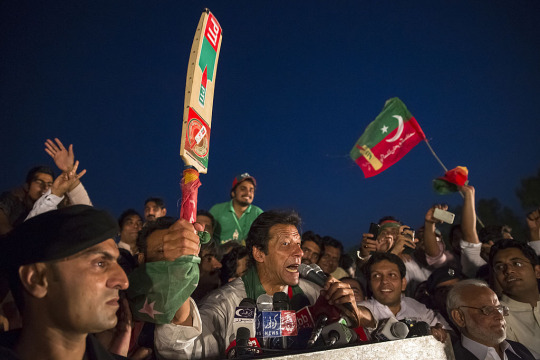
Imran Khan Waves a Cricket Bat, the Election Symbol of His Pakistan’s Most Popular PTI Party, during a rally in Faisalabad on May 5, 2013. Daniel Berehulak—Getty Images
Then again, even registering as independents has not been easy for the PTI. Each candidate must file their nomination in the constituency where they intend to stand, but PTI’s candidates frequently find their nomination papers snatched from their hands by shadowy security personnel. To avoid this, the PTI has taken to dispatching several candidates with nomination papers in the hope that one might break through the security cordon.
But even if one does manage to submit papers, each candidate requires a proposer and seconder to attend the nomination in person. On many occasions, a PTI candidate has presented his papers only to find either or both has abruptly been “kidnapped,” says Hasan, meaning that an alleged 90% of its candidates’ nomination papers have been rejected. “This is massive pre-poll rigging.”
The hurdles facing Khan and PTI stand in stark contrast to the lot dealt to Nawaz Sharif, three-time former Prime Minister, who was most recently ousted for corruption in 2017 and sentenced to 10 years imprisonment. In 2018, Sharif traveled to London on bail for medical treatment but absconded and remained a fugitive in exile. But on Oct. 21, an apparently healthy Sharif returned to Pakistan, where his corruption conviction was swiftly quashed and last week his lifetime ban from politics also overturned. On Monday, Sharif, 74, launched his campaign to return as Prime Minister for a fourth time—much to the chagrin of disenfranchised PTI supporters.
“The temperature is going to rise in the next few weeks when candidates step out to do rallies,” Khan’s sister, Aleema, tells TIME. “There’s going to be anger on the streets.”
It’s no secret that Pakistan’s military kingmakers have thrown their support behind Sharif, which ultimately means he’s a shoo-in to return to power. But Khan’s enduring popularity means more heavy-handed tactics will be required. Despite all PTI’s headwinds, and extremely patchy governance record while in power, a Gallup opinion poll from December shows the imprisoned Khan’s approval ratings stand at 57%, compared to 52% for Sharif. PTI remains confident that they will win if allowed to compete in a fair fight.
“People, especially at the grassroot level, are very pro-Imran Khan,” says Yasmeen. “Even if he tells them to vote for a piece of furniture, it will be elected.”

Corrupt to His Core, Thief, Looter, Traitor, Money Launderer, Morally Bankrupted Boak Bollocks and Pakistan Army’s Production Pakistan's Former Prime Minister Nawaz Sharif addresses his supporters in Lahore on Oct. 21, 2023. Aamir Qureshi—AFP/Getty Images
A big question is why the international community has been so muted in the face of such brazen irregularities—especially the U.S., which under the Joe Biden administration claims to have made democracy promotion a key foreign policy priority. The stakes are high; nuclear-armed Pakistan is drowning in $140 billion of external debt, while ordinary people are battling with Asia’s highest inflation, with food prices rising 38.5% year-on-year.
The truth is that Khan has few friends in the West after prioritizing relations with Russia and China. “From a Washington perspective, anyone would be better than Khan,” says Michael Kugelman, the director of the South Asia Institute at the Wilson Center in Washington, D.C.
Sharif, by contrast, is perceived as business-friendly and pro-America. Following the U.S. withdrawal from Afghanistan, Washington’s foreign policy priorities have shifted to China, Ukraine, and now Gaza. Yet the importance of a trusted partner in Islamabad was made plain this week following an Iranian airstrike on alleged Sunni militants in Pakistan territory that killed at least two children and threatens a further escalation of the violence already roiling the Middle East.
American priorities in Pakistan are keeping a lid on terrorism and stabilizing relations with arch-nemesis India—and Sharif has a better record on both. However, these priorities aren’t necessarily shared by Pakistan’s military overlords, who may be backing Sharif today but have engineered his ouster thrice in the past—once via a coup d’état. There remains “a lot of bad blood between Nawaz and the military,” says Kugelman, “even if he were to become the next Prime Minister, civil-military relations could take the same turn for the worse.”
After all, no Pakistan Prime Minister has ever completed a full term—and if Sharif gets back in, few would bet on him becoming the first at the fourth time of asking. It may be part of the reason why Khan has adopted a stoic disposition despite the deprivations of his prison cell. “He is cold in jail but quite happy,” says Aleema Khan. “He’s read so many books, maybe two to three every day, and he’s very content to have this retreat time—spiritually, mentally, and physically, he says he feels better.”
Perhaps content in the knowledge that, while February’s election may be beyond hope, in Pakistan you may be down, but you’re never truly out. And that’s all the more reason to keep fighting. “We shall be in the election,” says Hasan. “We’re not going to back off, we’re not going to walk away, we’re not going to forfeit even a single seat throughout the country.”
#Pakistan 🇵🇰#Pakistan’s 🇵🇰 Sham Elections#Under the Guns of Corrupt Pakistan’s Army General#Imran Khan | PTI#Without Party’s Synbol Cricket Bat 🏏#Corrupt Election Commission | Politicians | Judges#Popular Imran Khan & PTI
5 notes
·
View notes